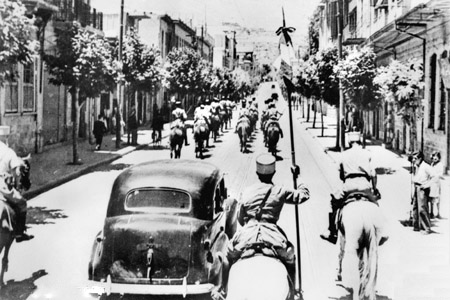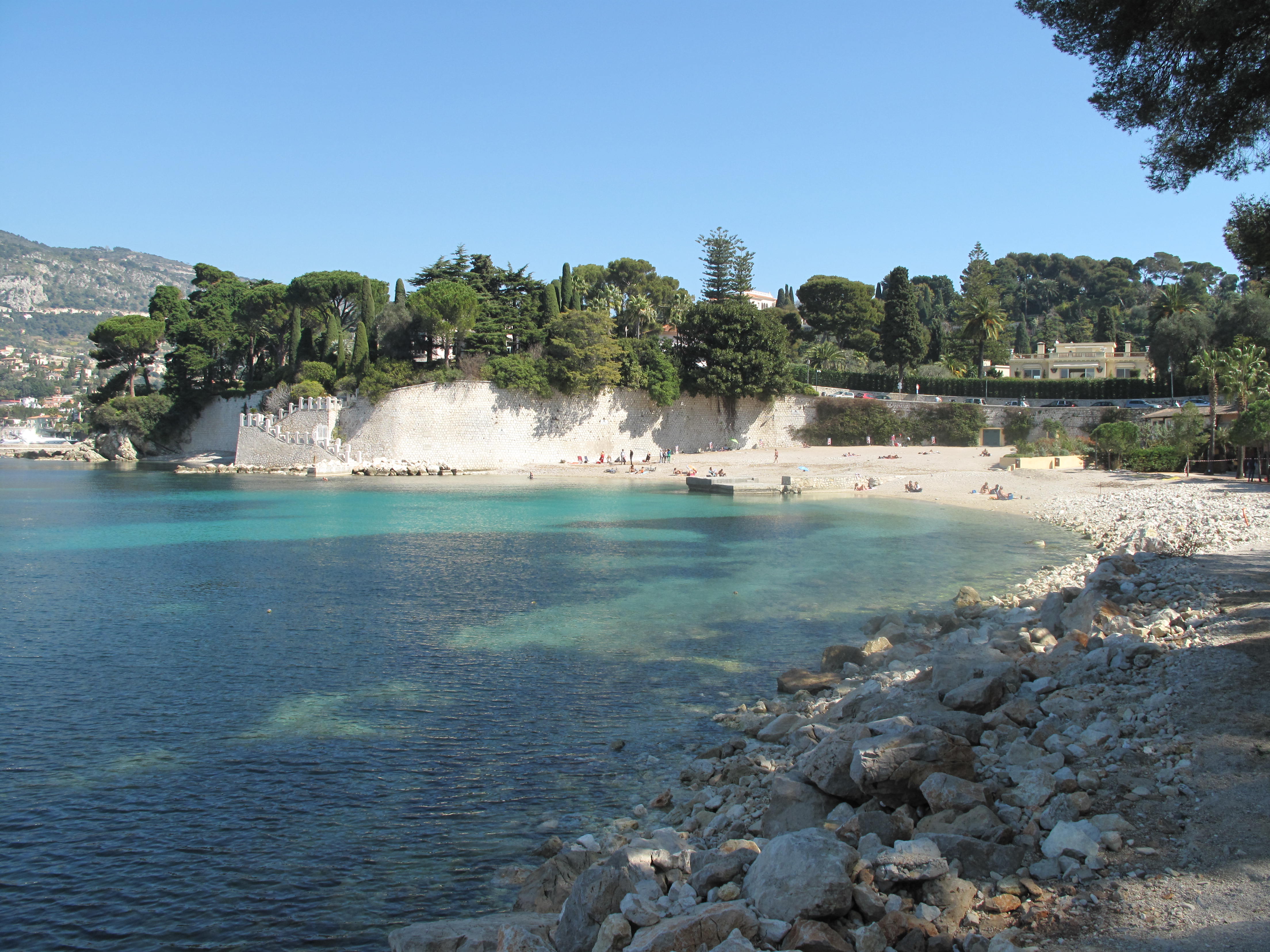|
Barry Dierks
Barry Dierks (1899 – February 20, 1960) was an American architect of the Modernist movement. He was active in France, principally on the French Riviera from 1925 to the 1950s. Biography Son of W. C. Dierks, managing director of C. C. Mellor pianos, Barry Dierks studied architecture at Carnegie Institute of Technology in Pittsburgh, from which he obtained his diploma in 1921. He continued his studies at the École des beaux-arts in Paris in the studio of Léon Jaussely. François Fray, conservateur du patrimoine, « La clientèle de l’architecte Barry Dierks sur la Côte d’Azur », ''In Situ, revue des patrimoines'', n°4, ministère de la Culture, March 2004read on line(page consulted on April 29, 2011) The need to guarantee his stay in France led him to accept a job at the Bank Choillet. Here, he made the acquaintance of the bank's director, Colonel Eric Sawyer, former officer in the British Army, who became his lover and lifelong companion. In 1925, the two decided to ... [...More Info...] [...Related Items...] OR: [Wikipedia] [Google] [Baidu] |
Pittsburgh
Pittsburgh ( ) is a city in the Commonwealth (U.S. state), Commonwealth of Pennsylvania, United States, and the county seat of Allegheny County, Pennsylvania, Allegheny County. It is the most populous city in both Allegheny County and Western Pennsylvania, the List of municipalities in Pennsylvania#Municipalities, second-most populous city in Pennsylvania behind Philadelphia, and the List of United States cities by population, 68th-largest city in the U.S. with a population of 302,971 as of the 2020 United States census, 2020 census. The city anchors the Pittsburgh metropolitan area of Western Pennsylvania; its population of 2.37 million is the largest in both the Ohio Valley and Appalachia, the Pennsylvania metropolitan areas, second-largest in Pennsylvania, and the List of metropolitan statistical areas, 27th-largest in the U.S. It is the principal city of the greater Pittsburgh–New Castle–Weirton combined statistical area that extends into Ohio and West Virginia. Pitts ... [...More Info...] [...Related Items...] OR: [Wikipedia] [Google] [Baidu] |
Georges Catroux
Georges Albert Julien Catroux (29 January 1877 – 21 December 1969) was a French Army general and diplomat who served in both World War I and World War II, and served as Grand Chancellor of the Légion d'honneur from 1954 to 1969. Life Catroux was born in Limoges, Haute-Vienne. He was the son of a career officer who had risen through the ranks. He was educated at the Prytanée National Militaire, and entered the École spéciale militaire de Saint-Cyr in 1896.Times obituary In the early years of his distinguished military career, Catroux moved from Algeria (where he met Charles de Foucauld and then Lyautey) to Indochina. In 1915, while commanding a battalion, he was taken prisoner by the Germans. During his time in captivity, Catroux met Charles de Gaulle, who was then a captain. After World War I, he became a member of the French military mission to Arabia, and then served in Morocco, Algeria and the Levant. In July 1939, Catroux was appointed Governor General of French ... [...More Info...] [...Related Items...] OR: [Wikipedia] [Google] [Baidu] |
Golfe-Juan
Golfe-Juan (; oc, Lo Gorg Joan, Lo Golfe Joan) is a seaside resort on France's Côte d'Azur. The distinct local character of Golfe-Juan is indicated by the existence of a demonym, "Golfe-Juanais", which is applied to its inhabitants. Overview Golfe-Juan belongs to the commune of Vallauris in the Grasse arrondissement of the Alpes-Maritimes department, which belongs in turn to the Provence-Alpes-Côte d'Azur region of France. The area is served by the ''Golfe Juan-Vallauris'' railway station. On March 1, 1815, Napoléon Bonaparte landed at Golfe-Juan with 607 Grenadiers of the Old Guard, 118 Polish Lancers, some 300 Corsicans, 50 Elite Gendarmes, 80 civilians, and 2 light artillery pieces, having escaped exile on the island of Elba. His return to Paris, commemorated by the Route Napoléon, and the campaign that led to his ultimate defeat at the Battle of Waterloo are known as the "Hundred Days". "Golfe Juan" is also the name of a pointillist painting done by Paul Signac ... [...More Info...] [...Related Items...] OR: [Wikipedia] [Google] [Baidu] |
Maxine Elliott
Maxine Elliott (February 5, 1868 – March 5, 1940) was an American actress and businesswoman. Early life Born Jessie Dermott on February 5, 1868, to Thomas Dermott, a sea captain and Adelaide Hill Dermott, she had a younger sister, actress Gertrude Elliot and at least two brothers, one of whom, a sailor, was lost at sea in the Indian Ocean. By age 15 in 1883, Jessie had been seduced and made pregnant by a 25-year-old man whom she may have married underage, according to her niece's biography. She either miscarried or lost the baby. This incident left a psychological wound on Jessie for the rest of her life. She was selected by the Pan-American Company to represent South America on the 1901 Pan-American Exposition logo. Acting She adopted her stage name ''Maxine Elliott'' in 1889, making her first appearance in 1890 in ''The Middleman''. In 1895, she got her first big break when Augustin Daly hired her as a supporting actress for his star player, Ada Rehan. After divorcin ... [...More Info...] [...Related Items...] OR: [Wikipedia] [Google] [Baidu] |
Château De L'Horizon
The château de l'Horizon is a Modernist villa that was constructed in 1932 by the American architect Barry Dierks for the actress Maxine Elliott. The villa is located on shores of the Golfe-Juan at Vallauris. The residence has received a number of distinguished guests, including Sir Winston Churchill, who was a regular guest between 1934 and 1940. Prince Ali Khan purchased the villa in 1948 and his marriage to Rita Hayworth was celebrated here the following year. History In 1932, Maxine Elliott (1868–1940) built directly on coast of the Golfe-Juan an imposing villa, which the magazine ''Punch'' later described as "a white palace set on the water." Endowed with an acute business sense and a passion for society, the actress spent $350,000 at the time for this structure anchored on the rocks with its private port. Elliott named the villa "château de l'Horizon." In her new summer residence Maxine Elliott received many celebrities of the day such as Lloyd George and the Duke an ... [...More Info...] [...Related Items...] OR: [Wikipedia] [Google] [Baidu] |
Six-Fours-les-Plages
Six-Fours-les-Plages (; oc, Sièis Forns lei Plaias, Sièis Four in provençal), is a commune in the Var department in the Provence-Alpes-Côte d'Azur region in southeastern France. Inhabitants of Six-Fours-les-Plages refer to themselves as "Six-Fournais". It is located in the Métropole Toulon Provence Méditerranée, and is southwest of the main city of Toulon. Features The city offers several points of interest. The fort on the hill that dominates the city neighbours an eleventh-century chapel, St Peter "collégiale". There are also nice beaches from the very popular "brutal beach", famous for windsurfing to the secret cove in the Sicié massif. The Île des Embiez is the site of an oceanographic research centre, and the smaller Île Gaou is where concerts are organised every summer. Population Notable people from Six-Fours-les-Plages *Jean-Claude Mas – founder of Poly Implant Prothèse (PIP), breast implant manufacturer. *Hélène Ségara – pop singer. *Nolan Seveyra ... [...More Info...] [...Related Items...] OR: [Wikipedia] [Google] [Baidu] |
Bormes-les-Mimosas
Bormes-les-Mimosas (; oc, Bòrmas dei Mimòsas) is a commune in the Var department, Provence-Alpes-Côte d'Azur Region, southeastern France. It has a Mediterranean climate. Bormes-les-Mimosas is a city in bloom and won the 2003 Gold Medal awarded by the Entente Florale. The Fort de Brégançon, located in the commune, is the official retreat for the President of the French Republic. The historic village is situated on the hills. Medieval houses are overgrown with bougainvillea flowers. Significant buildings include the church and the town hall. Other parts of town include the seaside district of La Faviere with its marina. Geography Climate Bormes-les-Mimosas has a hot-summer Mediterranean climate ( Köppen climate classification ''Csa''). The average annual temperature in Bormes-les-Mimosas is . The average annual rainfall is with October as the wettest month. The temperatures are highest on average in August, at around , and lowest in January, at around . The high ... [...More Info...] [...Related Items...] OR: [Wikipedia] [Google] [Baidu] |
Paul-Louis Weiller
Paul-Louis Weiller (September 29, 1893, Paris - December 6, 1993, Geneva) was a French industrialist and philanthropist. Biography From a Jewish Alsatian family, Weiller was the son of the industrialist and politician Lazare Weiller (1858–1928) and Alice Anna Javal (1869–1943), scion of the Javal family, who rose to prominence in business, finance, and politics during the 19th century. His maternal grandfather was Louis Émile Javal. Through his mother he was the cousin of Louise Weiss and Jenny Aubry. Weiller studied engineering at the École Centrale Paris and graduated in 1914 with a graduate diploma. He later became an aviation hero during the First World War. Using aerial photography during his reconnaissance flights, he was shot down on several occasions and wounded.Biography froMusée aéronautique et spatial du groupe SAFRAN (accessed 23 August 2008) Receiving 12 honorable citations from the army, he was made an officer in the Legion of Honor at the age of 25 (th ... [...More Info...] [...Related Items...] OR: [Wikipedia] [Google] [Baidu] |
Villa La Reine Jeanne
The villa ''La Reine Jeanne'' is an imposing holiday mansion, built in 1928 by the American architect Barry Dierks for the French industrialist Paul-Louis Weiller. Located on of land in the village of Cabasson, in the commune of Bormes-les-Mimosas ( Var), the property is near the Fort de Brégançon. It is renowned for having received numerous celebrities, stars, writers, monarchs, and heads of state, among whom Charlie Chaplin, Richard Nixon, King Juan Carlos of Spain, and Georges Pompidou are noted. History In the mid-1920s, while searching for a place to build his summer home, Paul-Louis Weiller explored the French Riviera at the controls of an airplane. He discovered the site, located on the ''pointe de la Galère'' in the village of Cabasson at Bormes-les-Mimosas. The area, which he purchased, extended over , included a forest of maritime pines and cork oak trees near a beach, where, in 1347, queen Joanna I of Naples, comtesse de Provence disembarked. In 1928, Weil ... [...More Info...] [...Related Items...] OR: [Wikipedia] [Google] [Baidu] |
Saint-Jean-Cap-Ferrat
Saint-Jean-Cap-Ferrat (; oc, Sant Joan de Cap Ferrat; Italian: ''San Giovanni Capo Ferrato'') is a commune in the Alpes-Maritimes department in the Provence-Alpes-Côte d'Azur region in Southeastern France. In 2017, it had a population of 1,573. Cap Ferrat was named in 2012 as the second most expensive residential location in the world after Monaco. Saint-Jean-Cap-Ferrat is located on a peninsula next to Beaulieu-sur-Mer and Villefranche-sur-Mer and extends out to Cap Ferrat. Its tranquility and warm climate make it a favourite holiday destination among the European aristocracy and international rich who visit the French Riviera. History Saint Jean Cap Ferrat was known to the ancient Greeks as Anao. The site of present-day Cap Ferrat was first settled by Celto-Ligurian tribes, then by the Lombards at the end of the 6th century. Sant Ospizio (or Saint Hospice), a hermit friar, is said to have inhabited a tower on the Eastern part of the peninsula. Middle Ages Saint-Jean-C ... [...More Info...] [...Related Items...] OR: [Wikipedia] [Google] [Baidu] |




